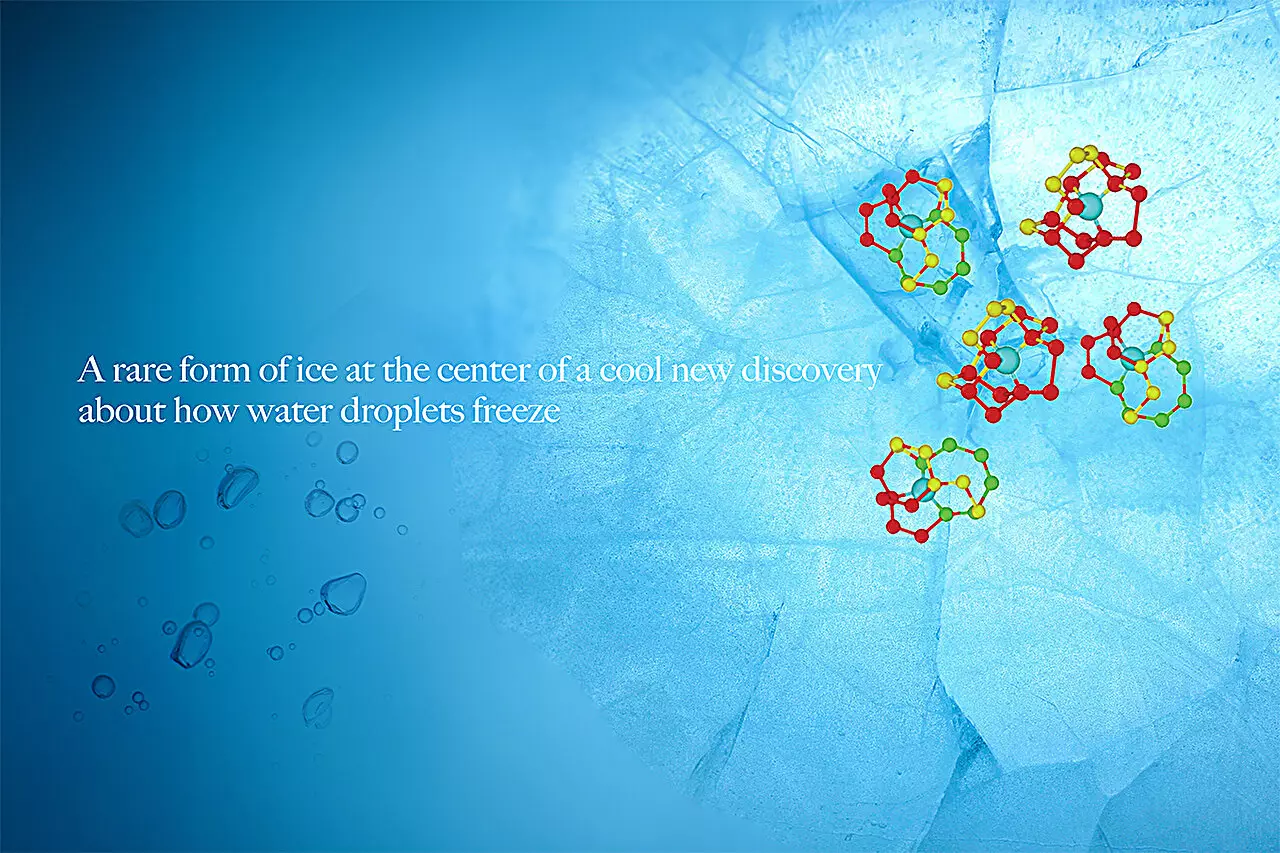

Ice is not as simple as we often think. There are actually more than 20 different types of ice known to science, all forming under varying conditions of pressure and temperature. The ice commonly used to cool our beverages is referred to as ice I, and it is one of the few forms of ice that naturally occurs on our planet.
A recent breakthrough by researchers from Japan introduced a new type of ice – ice 0. This unique form of ice has the capability to initiate the formation of ice crystals in supercooled water. The process of ice formation at the surface of liquid water can be triggered by tiny crystal precursors that possess a structure resembling the rare ice 0.
In a study published in Nature Communications, experts from the Social Cooperation Research Department “Frost Protection Science” at the Institute of Industrial Science, The University of Tokyo shed light on how these ice 0-like structures lead to the freezing of water droplets near the surface rather than the core. This discovery has resolved a long-standing mystery and has the potential to reshape our understanding of ice formation.
Traditionally, ice crystallization, also known as ice nucleation, was believed to occur heterogeneously – primarily at a solid surface. However, the latest research indicates that ice can crystallize just beneath the water’s surface, where it meets the air. The nucleation of ice happens around small precursors with a specific ring-shaped structure like ice 0.
The structure of ice 0 precursors closely resembles supercooled water, making it easier for water molecules to crystallize without needing to conform directly to the regular ice structure. These tiny ice 0 precursors form spontaneously due to negative pressure effects created by water’s surface tension. Once the crystallization process begins, these structures swiftly transform into the more common ice I.
Senior author Hajime Tanaka emphasized the wide-reaching implications of the research, stating that the understanding of surface crystallization of water could significantly impact various fields such as climate studies and food sciences where water crystallization is crucial. This study opens up new avenues for research and application in these areas.
Comprehending the intricacies of ice formation provides valuable insights across different disciplines. In meteorology, for instance, the discovery of ice formation using ice 0-like precursors could have a substantial impact on small water droplets present in clouds. Furthermore, this knowledge could be useful in technological advancements, ranging from food sciences to air conditioning.
The study of ice formation, particularly the discovery of ice 0 and its unique properties, has expanded our understanding of this complex process. The implications of this research extend beyond the realm of science, offering potential applications in various industries and fields. As we continue to explore the mysteries of ice, we unveil new possibilities for innovation and advancement.
Natural gas leaks are a growing concern in both urban and rural settings, with potential…
Recent groundbreaking research at the University of Vienna has unveiled a novel interplay of forces…
In recent years, perovskites have garnered significant attention in the fields of materials science and…
For decades, astronomers have probed the depths of the Milky Way, grappling with two perplexing…
Foreign direct investment (FDI) in developing nations has long been heralded as a path to…
As spring beckons in April and May, stargazers have the unique opportunity to witness nature's…
This website uses cookies.